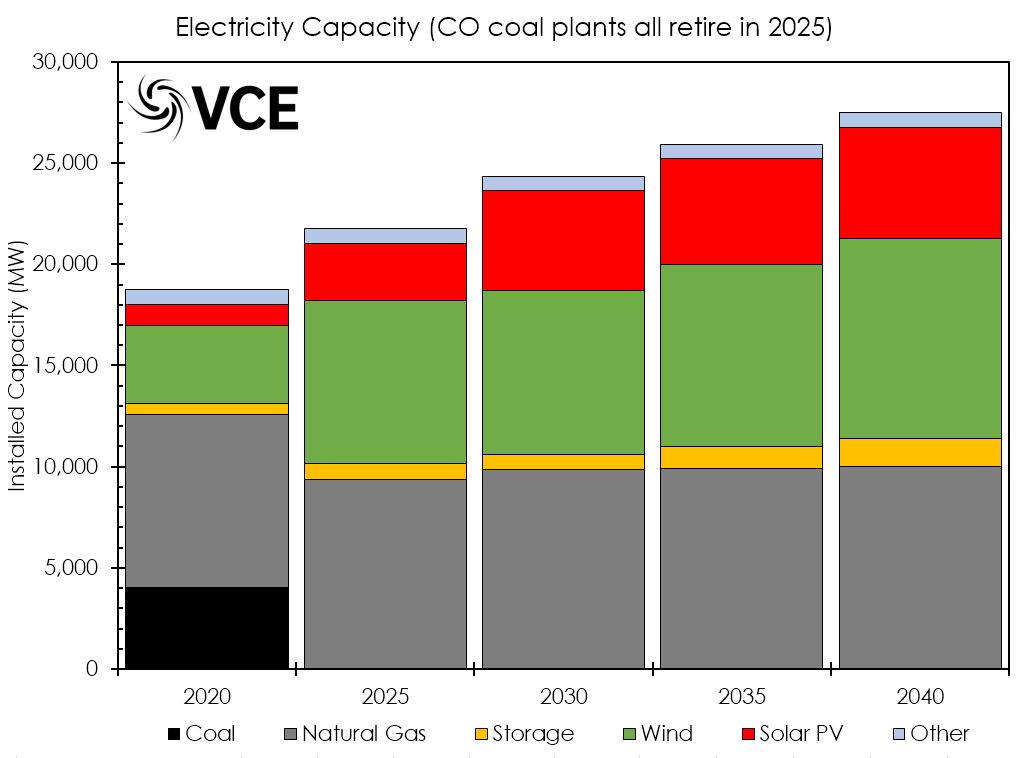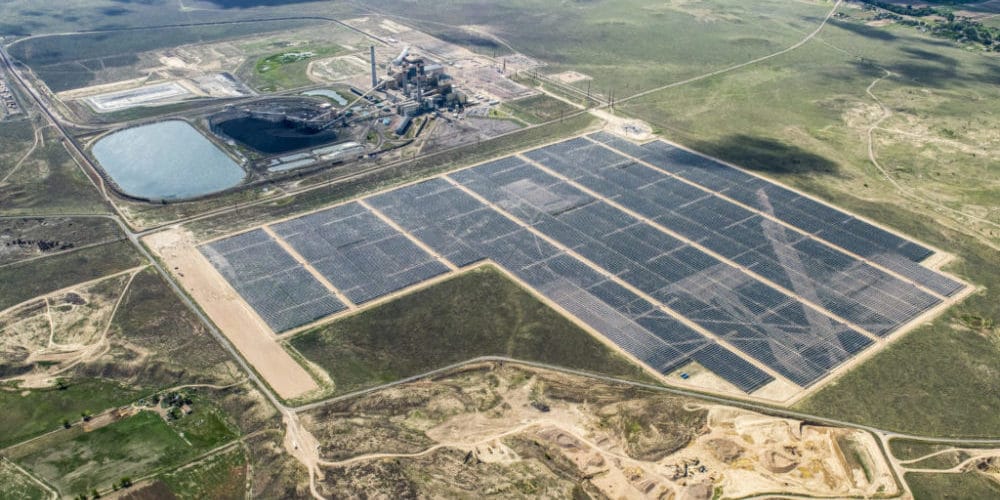On Friday, NextEra’s CEO Jim Robo said that solar+wind+storage was going to be “massively disruptive to the conventional fleet“. Robo suggested that wind would cost 2-2.5¢/kWh and solar would be 2.5-3¢/kWh with four hours of storage adding 0.5-1¢/kWh.
And proving that Robo puts his money where his mouth his, these numbers closely aligned with the bids found in the industry-shaking Xcel request for proposals (RFP) from late 2017, where we saw energy storage add 0.65¢/kWh to wind and solar bids a as low as 1.81¢/kWh and 2.9¢/kWh, respectively. It is these bids that eventually led to Colorado finalizing plans to retire 660 MW of coal early while building 1 GW of wind, 700 MW of solar and 275 MW / 1 GWh of energy storage.
Now, an analysis sponsored by Community Energy, and prepared by Vibrant Clean Energy (pdf), has delivered a pathway to closing the rest of the state’s remaining 4 GW of coal electricity generation, over various time frames – while concurrently lowering electricity rates in the state. The model showing all coal shut down by 2025 requires building 8 GW of new wind, 2.8 GW of additional solar and 765 MW / 3.1 GWh of energy storage. The model projects that the retail price per kilowatt-hour of electricity could fall from 10.2¢/kWh to 9.7¢/kWh.
Of key importance, the bids received in the Xcel RFP noted above, were priced lower than the numbers in this report – meaning reality has already run past the projections.

And then the big money starts rolling in. The report suggests that Colorado would save $250 million a year, before considering health, pollution and climate change benefits. Not to mention an increase in the local velocity of money and jobs that would come from the construction boom.
The report’s press page includes the Colorado Stand Input Assumptions (.xls), which details all hardware and energy costs assumptions used to build the model, and the results summary (.xls) describes the capacities.
The report suggested 2020 pricing of $2.25/W for residential solar, $1.20/W for commercial, and 84¢/W for utility scale. By 2025, the report sees those numbers falling to $1.60/W, 94¢/W and 71¢/W, respectively.
While speaking with pv magazine, report commissioner Eric Blank of Community Energy said his company became motivated to develop the report during their own project development work. Having developed the largest operating solar project in the state, the 120 MWac / 156 MWdc Comanche Solar facility in Pueblo, Colorado, the group was preparing bids for the aforementioned Xcel RFP and found that their costs models were showing record setting values. And then the final bids came in and it turned out that bigger fish saw even lower numbers were possible.
We couldn’t believe that people actually got underneath us. Solar is so cheap, its potentially transformative, and this is our attempt to quantify the extent of the benefit.
The report also modeled letting coal plants slowly retire, and it saves consumers even more money; but at the cost of their health, homes and planet. Under the 2025 model, the state’s CO2 emissions fall from 36 million metric tons in 2020, to 16 mmt in 2025 – a greater than 50% fall.
The report also shows that additional capacities of wind, solar, storage and gas will be needed through 2040 to keep up with demand growth.
This content is protected by copyright and may not be reused. If you want to cooperate with us and would like to reuse some of our content, please contact: editors@pv-magazine.com.








Living in Colorado I think we should do this with the caveat that we should also look at getting rid of NG or at least reducing it severally.
Yes natural gas use needs to come down also…to zero eventually, by adding even more solar, wind power and storage.